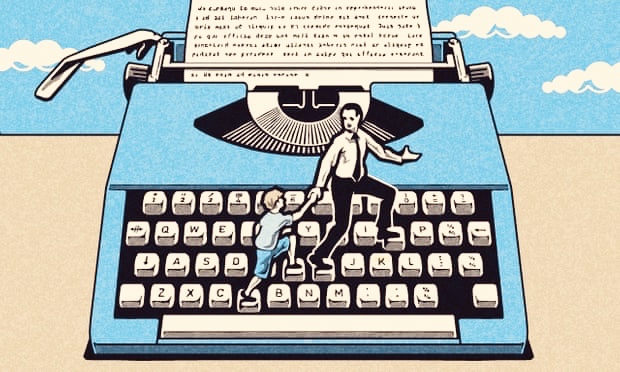Media freedom in India id est Bharat has never been a more scarce commodity than in the year of the lord 2012.
The fourth estate is under concerted attack from all three pillars of our democracy—the legislature, the executive and the judiciary. Organisations mandated to protect media freedom (like the press council of India) are happily chomping its heels. Every day the sound of some distant door closing echoes through the internet chamber.
On top of it all, or because of it all, the sparks of public cynicism about the media and its practitioners (thanks to paid news, private treaties, medianet, and this, that and the other) has become a wildfire, its faceless flames licking the very hand that feeds. Regulation and self-regulation is the mantra on every lip.
The illiberalism, the intolerance, the control-freakery that have become a part of the accepted discourse in 21st century India was most evident last week when parliament—the so-called temple of democracy—committed the ultimate sacrilege: a Harvard-trained poet agreeing to remove newspaper and magazine cartoons from school textbooks because they could hurt the fragile egos of faceless mobs back where they go out with their bowls every five years.
The ostensible provocation was a 1949 cartoon of B.R. Ambedkar, the Constitution framer and Dalit icon, drawn by P. Shankar Pillai, the legendary cartoonist, in his now-defunct magazine Shankar’s Weekly that had been included in an NCERT textbook in 2006.
But it was clearly a smokescreen to sneak in the scissors to cut out all cartoons about all politicians in all textbooks.
Shankar’s Weekly shut down on 31 August 1975, the very year Indira Gandhi declared Emergency, on whose back rode a beast called Censorship.
In circa 2012, as her daughter-in-law Sonia Gandhi thumped the desk when Kapil Sibal eloquently ushered in Censorship without the formal proclamation of Emergency, it’s useful to go through Shankar Pillai’s farewell editorial, which shows that the more things change, the more they remain the same.
***
FAREWELL
“We started with an editorial 27 years ago. We will end with another.
“The world was different in 1948. The Cold War had not taken the sinister overtones that it later did. The atom bomb was in our midst and there was scare of war. But there was no apprehension that life would be wiped out from the earth in a nuclear holocaust.
“The United States was riding high with sole possession of the atom bomb. Communism was to be rolled back by its strength and Time magazine’s brave words. But monolithic communism was already breaking up. In 1946 Yugoslavia was expelled from the Cominform.
“Less than a year after Shankar’s Weekly was born, Mao Tse-tung took over mainland China, for ever changing the dimensions of international affairs. While Europe was still struggling to get over the aftermath of a ruinous war, Asia stood up for the first time as independent entity.
“Soon after Africa emerged from colonial darkness. The old imperialisms watched uneasily at Bandung and Afro-Asian solidarity. Perhaps there was something in Nehru’s non-alignment after all.
“The world of today is very different. The Cold War is still there but played according to already laid ground rules usually. West Europe has been integrated in a sense, although the sense of nationalism is still strong. Africa by and large has not steadied itself except in one or two countries.
“White supremacy is still unchallenged in South Africa and Rhodesia. Asian politics has become uncertain largely due to Sino-Soviet rivalry. Latin America seethes with unrest, but the CIA and multi-nationals are trying to contain discontent. Economically, the world is somewhat better off than 27 years ago despite runaway inflation and drought and so on. But the quality of human life cannot be said to have shown any qualitative change.
“This is what brings us to the nub of the matter. In our first editorial we made the point that the our function was to make our readers laugh – at the world, at pompous leaders, at humbug, at foibles, at ourselves. But, what are the people who have a developed sense of humour? It is a people with a certain civilised norms of behaviour, where there is tolerance and a dash of compassion.
“Dictatorships cannot afford laughter because people may laugh at the dictator and that wouldn’t do. In all the years of Hitler, there never was a good comedy, not a good cartoon, not a parody, or a spoof. From this point, the world and sadly enough India have become grimmer.
“Humour, whenever it is there, is encapsuled. Language itself has become functional, each profession developing its own jargon. Outside of the society of brother-cartoonists, an economist is a stranger, floundering in uncharted territory, uncertain of himself, fearful of non-economic language.
“It is the same for lawyers, doctors, teachers, journalists, and such-like.
“What is worse, human imagination seems to be turning to the macabre and the perverse. Books and films are either on violence or sexual deviations. Nothing seems to awaken people except unpleasant shocks. Whether it is the interaction of the written word and the cinema on society or not, society reflects these attitudes. Hijackings, mugging in the dark, kidnappings, and plain murder are becoming everyday occurrences and sometimes lend respectability by giving it some kind of political colouration.
“But Shankar’s Weekly is an incurable optimist. We are certain that despite the present situation, the world will become a happier and more relaxed place. The spirit of man will in the end overcome all death dealing forces and life will blossom to a degree where humanity will find its highest purpose discharged.
“Some call this God. We prefer to call it human destiny. And on that thought we bid you good-bye and the best of luck.”
Published on Sunday, 31 August 1975
Hat tip: D.D. Gupta
Image: A facsimile of the front cover of Shankar’s Weekly









Study the Ambedkar-snail cartoon carefully. Ambedkar, whip in hand, is looking at the snail. Nehru, also whip in hand, is looking at the snail, not Ambedkar. How did we miss such detail?
Who says we missed it? There is no mistake here. Sibal did what he wanted to do, deliberately and knowingly
Blanket ban on cartoons is uncalled for. If the politicians thought one of their politician was bad would they ban the whole political class?
Indians under 25 may not realise the yeoman contribution of RK Laxman to free speech, satire and pointed humour that wasn’t vicious. Are there any write ups?
Thanks for the A2A, Nabeel Rashid . Since a number of others have written about RK Laxman and his cartoons, let me write a little about “Yeoman contribution … to free speech, satire and pointed humour that wasn’t vicious”. K. Shankar Pillai http:/…